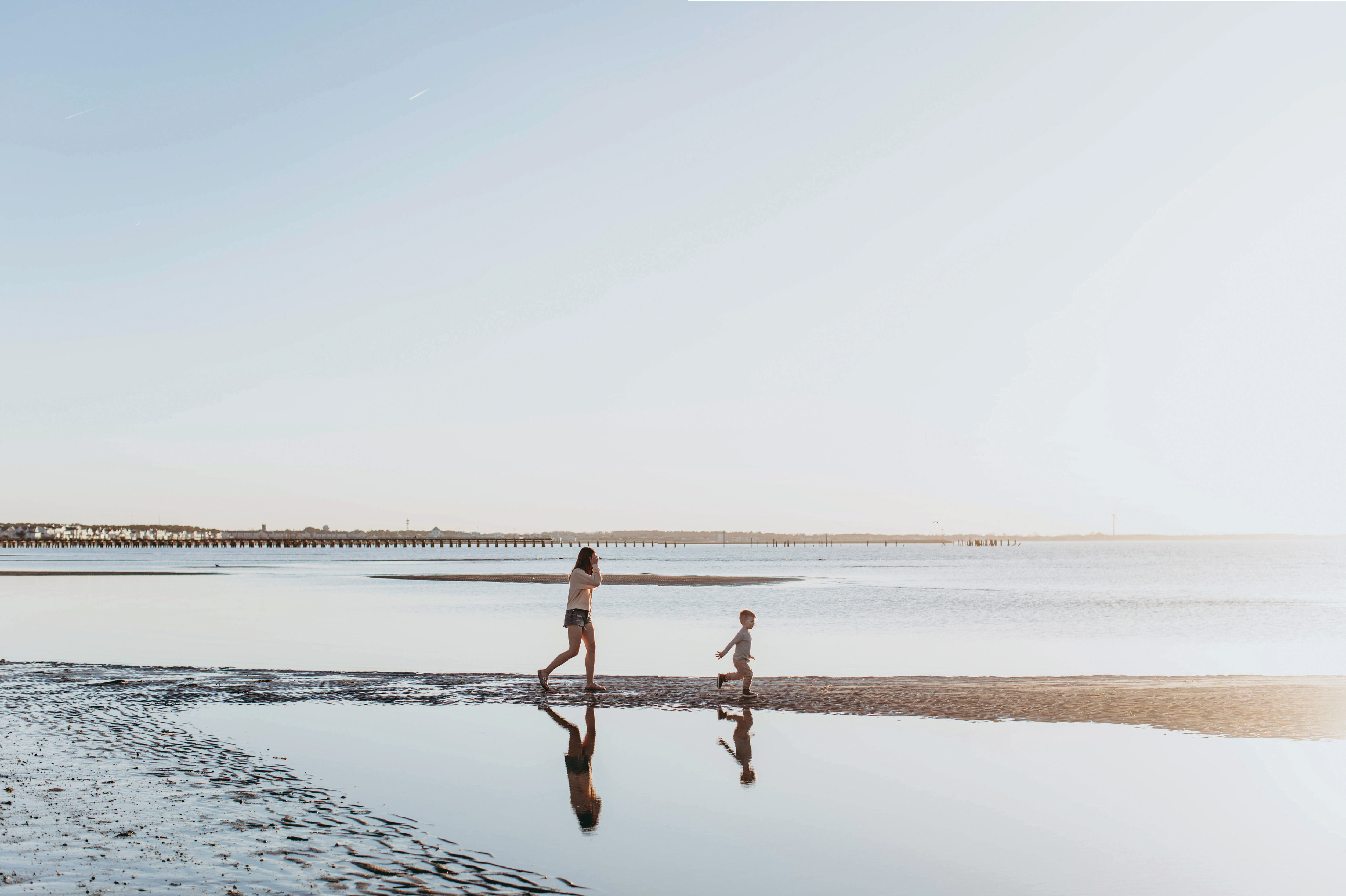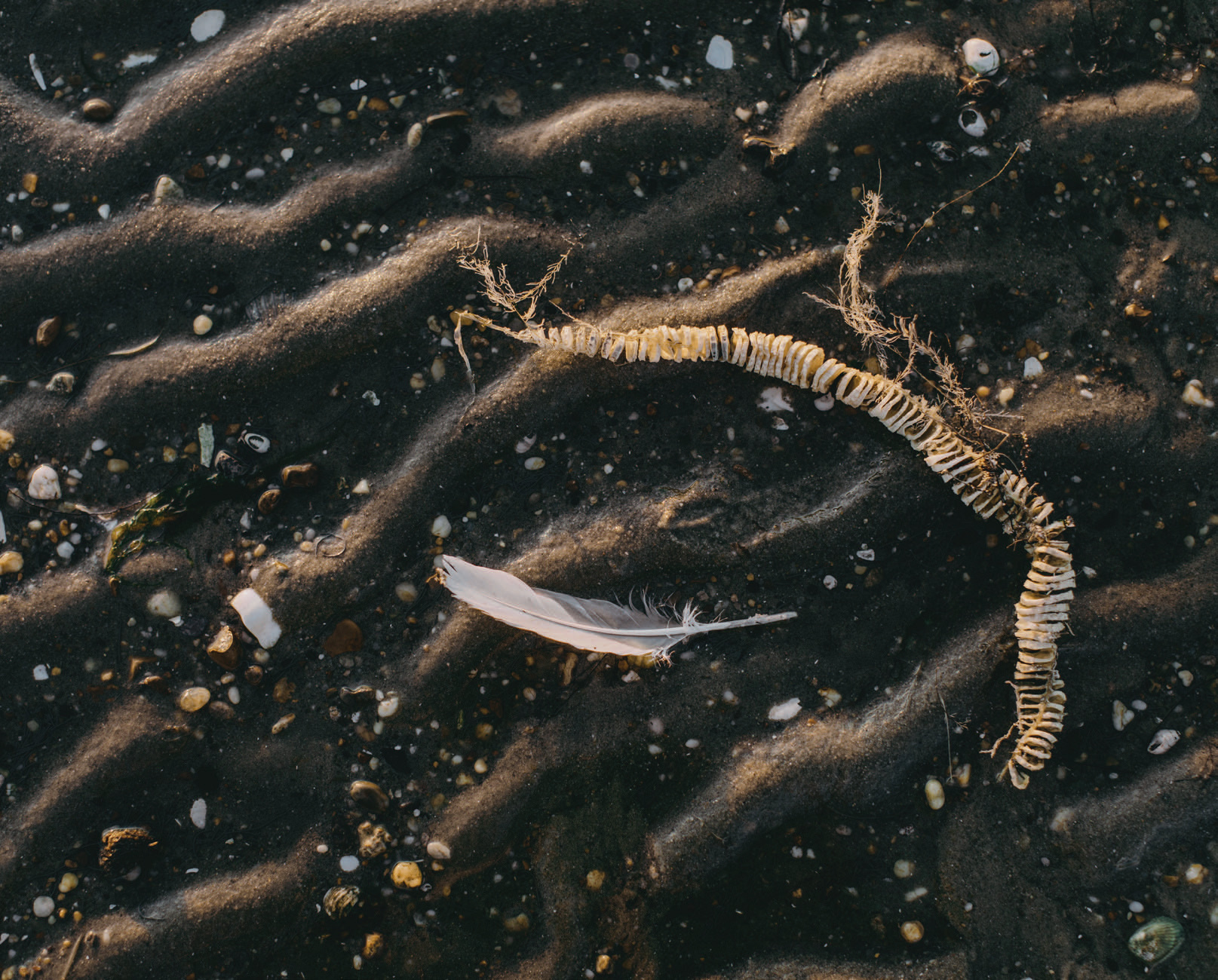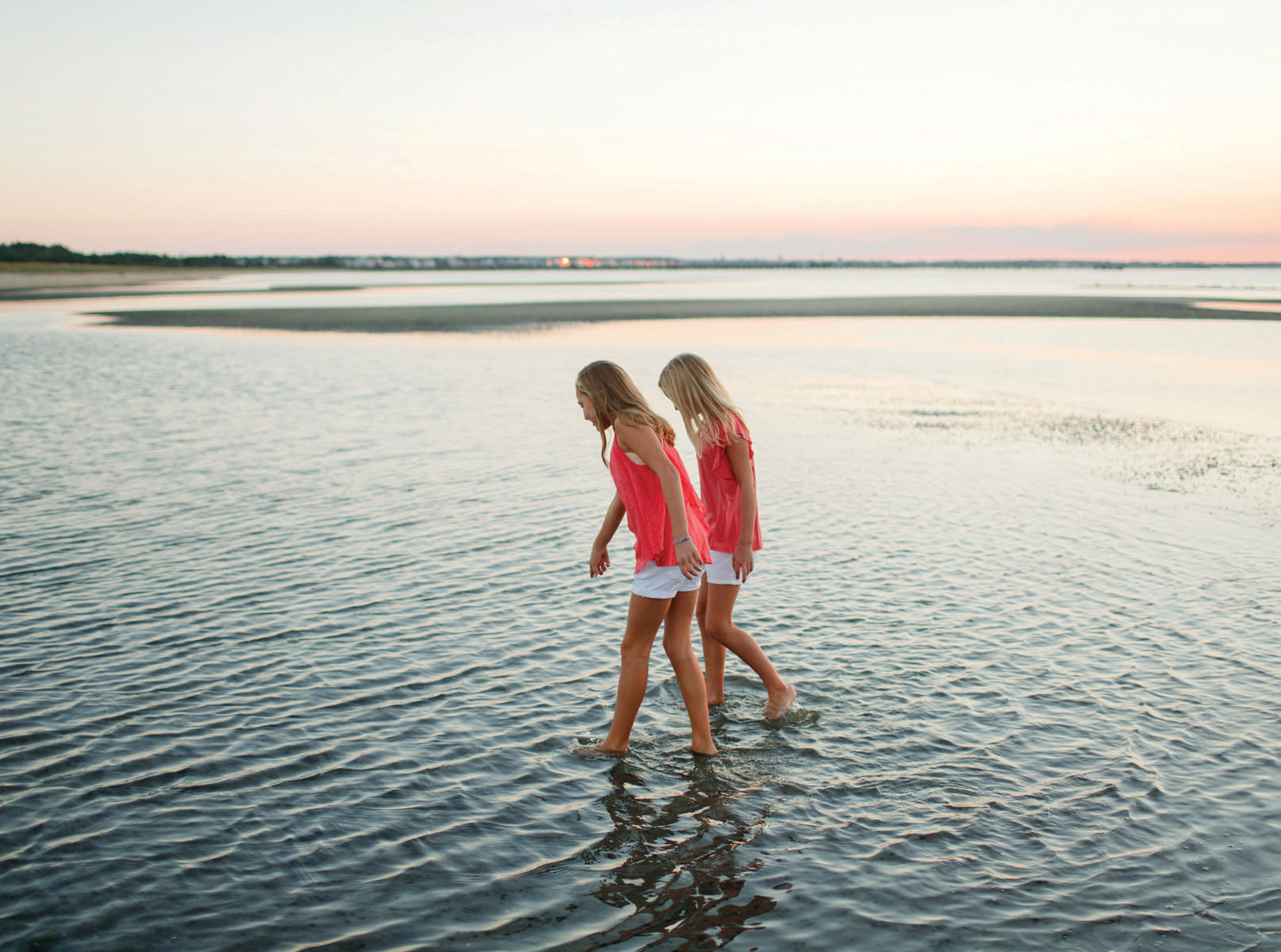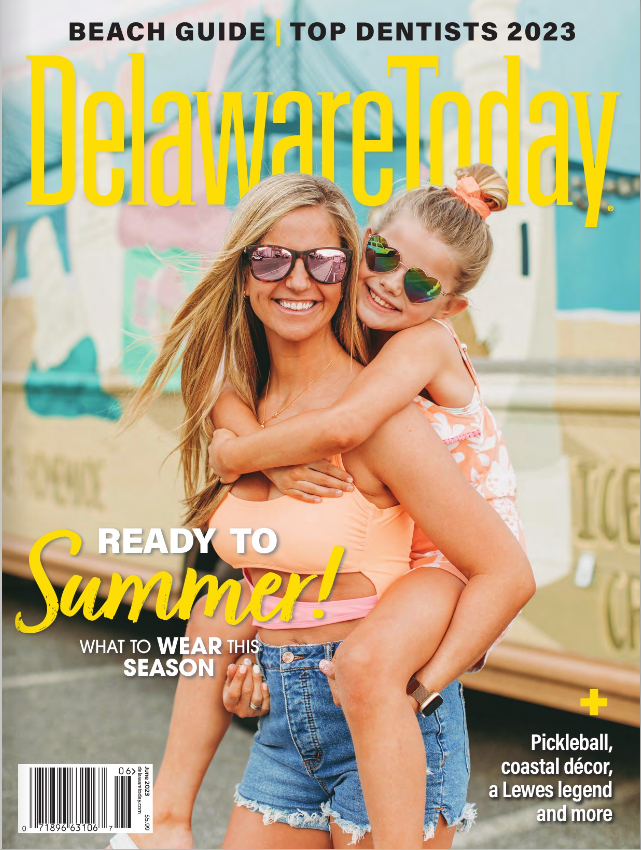Share
Photos by Maria Deforrest
You’d be surprised to see what creatures are featured on Delaware beaches…if you look closely.
To a casual observer, the swirling edge where sand meets water on Delaware beaches might just look like the line between where crowds sunbathe and fish swim. It’s also habitat, though, home to myriad creatures who have adapted to live in these border environments.
Cape Henlopen State Park interpretive programs manager Richard Julian has a great vantage point to observe these different habitats, as the park spans beaches from the Delaware Bay on one side of the cape’s point to the Atlantic Ocean on the other.
The softer waves and tide pools of the bay side and the heavier surf on the ocean side are different habitats, Julian explains. Here, he shares which creatures you can find in both.

Chloe DeForrest and Zeke Clark explore the ever-changing border where water meets land.
Bay beach and tide pools
Starting from the bottom up, different species of shellfish like quahogs or jackknife clams and the occasional oyster inhabit the sand and sediment.
Above them, hermit crabs squat in abandoned shells from other creatures. They are joined by aptly named mud snails, rather homely little critters that can look like brown blobs when coated with silt. These, along with sand shrimp, feed a little like scavenging cattle across the bottom sediments, eating bits of plants and dead sea creatures.
Then there are whelks, the creatures that live in those graceful spiral shells with pointed tips, and moon snails. Don’t let the pretty shells fool you—these creatures are the lions or leopards of the tide pool ecosystem. Moon snails drill through clam shells, using stomach acid to help eat away their protective casings, extracting bits of the clam piece by piece, Julian says. (Oyster drills, less common in this habitat, also bore through shells, but then “shoot their stomach acids in it and turn their meal into like a big Slurpee, and then they’ll sip it out,” Julian adds.) Whelks take a less sophisticated approach, opting for brute force to crack open shells.
“These animals are adapted to the habitats that they live in. If you take them out of it, they’re not going to do too well.”
—Richard Julian
You might also find little killifish, preyed on by blue crabs or their duller-colored counterparts, lady crabs, both of which will also snap up a sand shrimp. If you find a flounder in a tide pool, it’s having a bad day—they try to get out to deeper water when the tide recedes.
Ocean surf
The topsy-turvy, swirling world of beach waves is inhabited by a slightly different crowd, including those little egg-shaped crustaceans called sand crabs or, less flatteringly, “mole crabs” or “sand fleas,” which you can see scurrying as the water recedes. They eat tiny pieces of plants, algae and dead sea animals that they filter out of the waves.

Whether you dip your toes into the tide pools by the bay or frolic in the surf by the ocean, the First State is the perfect place to learn about a diverse array of wildlife.
Trying to do the same thing, with less scurrying, are Donax clams, small bivalves with eye-catching, soft-colored shells. You might also spot, running in pursuit of small sand crabs and clams, little wading birds called sanderlings, along with a variety of other shorebirds. Many of these also feed on the eggs of horseshoe crabs, which also inhabit these waters.

Traces of billions of life forms wash up on Delaware shores and end up in our tide pools, like this knobbed whelk egg case.
Sometimes, creatures like sea stars wash in from deeper waters, or more rarely, tiny octopuses, Julian says. Ghostly jellyfish ride wherever the currents take them, so they come and go. Some of them sting or cause a slight burning feeling, while others you’ll never notice.
Tread lightly
These fascinating little creatures, or the beautiful shells they leave behind, make beachcombing a popular hobby, but Delaware State Parks advocates a light touch. You might put a little water in a bucket and catch some of the animals for a few minutes, Julian says, but you should leave them where you found them.
“These animals are adapted to the habitats that they live in. If you take them out of it, they’re not going to do too well,” Julian says. Even empty shells should stay put—they can be home to other animals, like hermit crabs, barnacles or seaweed.
“There’s a lot of cool stuff out there, and the reason why it’s there is because that’s its home. So we like to keep things where they are.”
—Richard Julian
“There’s a lot of cool stuff out there, and the reason why it’s there is because that’s its home,” Julian says. “So we like to keep things where they are.”

Payton and Alexi Nowakowski enter a world of discovery: See jackknife clams, oysters, hermit crabs and moon snails in the bayside tide pools, as well as sand crabs, shorebirds and even tiny octopuses in the foam by the ocean.



